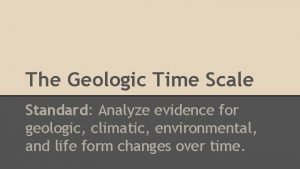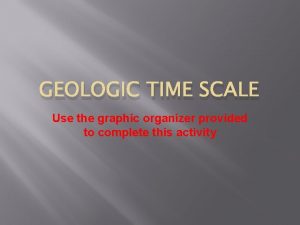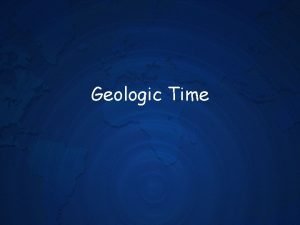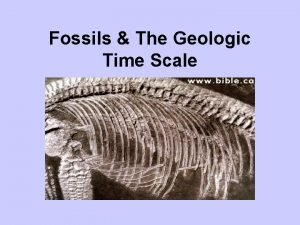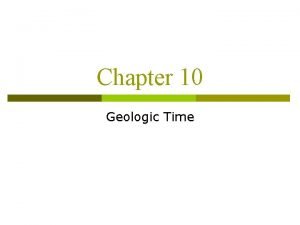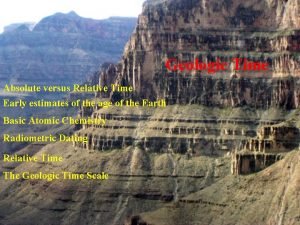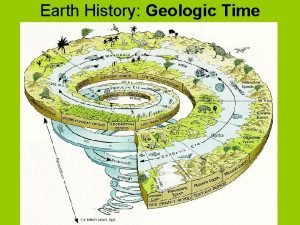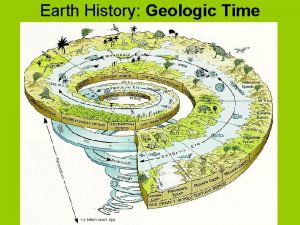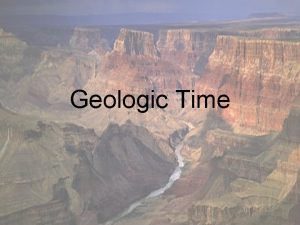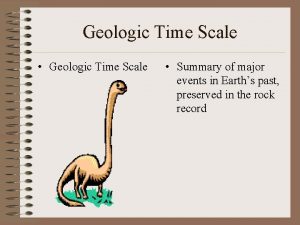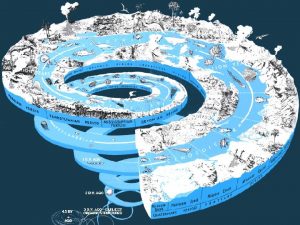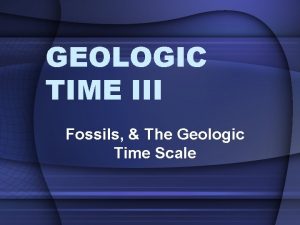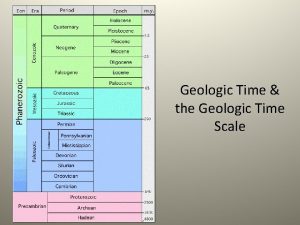The Geologic Time Scale Geologic Time Scale Geologic











- Slides: 11


The Geologic Time Scale

Geologic Time Scale • Geologic Time Scale: is a record of the geologic events and the evolution of life forms as shown in the fossil record. • To develop the time scale, scientists first studied the different rock layers and index fossils. • Then the scientists put the Earth’s rock layers in order by relative age. • Using the process of radioactive dating, scientists determined the absolute age of the different divisions in the geologic time scale.

Division of the Geologic Time Scale • Geologists studied the fossils within each rock layer and found distinct changes in life forms at specific points in time. • The geologists used these changes to distinguish where one unit of geologic time ends and where the next unit begins. • The geologic time scale divisions depend on the distinctive events throughout the history of life on Earth.

• Infer: What major events could have possibly occurred for these divisions of time to be created?

Precambrian Time • Precambrian Time is considered to be the longest unit of time in the geologic time scale with 88% of Earth’s history located in this unit. • The Precambrian Time span lasted for 4, 600 years and ended 542 million years ago when the Paleozoic era began.

Era • After the Precambrian Time ended the geologic time scale was divided into three long units of time known as eras. • Eras: – Paleozoic Era – Mesozoic Era – Cenozoic Era

Geologic Eras • Paleozoic Era: began 542 million years with the Cambrian explosion of a variety of organisms such as brachiopods, trilobites and invertebrates. • Mesozoic Era began 251 million years ago with the first appearance of small mammals and other organisms such as dinosaurs, reptiles, and flowering plants. • Cenozoic Era only began 66 million years ago with the increase in, plants, insects, grasses, and larger mammals such as bats, dogs, cattle, and humans.

Geologic Periods • Each era was subdivided into units of geologic time known as periods. • The different names for the geologic time periods were created based on different places around the world where scientists first described the rocks and fossils. • Example: Mesozoic Era subdivides into three geologic periods: – Triassic – Jurassic – Cretaceous

Epoch • Periods could further be subdivided into units of time known as an Epoch. • A geologic period could only be subdivided into an Epoch for the more recent segment of the geologic time scale since older rock has been destroyed by the natural processes of the Earth.

Geologic Units • Which geologic time unit (epoch, era, period) is the largest? • Which geologic time unit (epoch, era, period) is the smallest? ___________>______
 Compare geologic time with the geologic column.
Compare geologic time with the geologic column. How is the geologic time scale organized
How is the geologic time scale organized Geologic time scale graphic organizer
Geologic time scale graphic organizer How is the geologic time scale organized
How is the geologic time scale organized Geologic time scale animals
Geologic time scale animals The longest subdivision of the geologic time scale is the
The longest subdivision of the geologic time scale is the Moth scale
Moth scale Geologic time
Geologic time Geologic time scale
Geologic time scale Silurian period
Silurian period Geologic time scale
Geologic time scale 4 zoic eras
4 zoic eras

